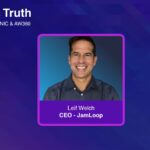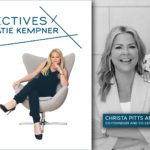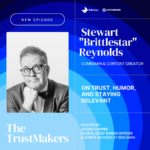By Taylor Morgan, Advertising Week
At Advertising Week Europe 2025, the question wasn’t whether influencer marketing works—it was whether it’s gotten too powerful. And if you were in the packed audience at this headline session, you know one thing for sure: no one held back.
Moderated by journalist Omar Oakes, the panel framed influencer marketing as both a cultural force and a professional dilemma. What started as a spirited industry debate quickly evolved into a philosophical reckoning about authenticity, accountability, and the future of media.
The Motion: “Are Influencers Too Influential in Advertising?”
Team “Yes”:
Sabrina Francis (The7Stars) and Susie Barker (AMV BBDO) laid out a sharply argued case for rebalancing the scales. Their central thesis? Influencers aren’t the enemy—but we’ve given them too much power, too fast.
Francis warned of an ecosystem driven more by “vibes and viral moments” than by trust and strategic oversight. She cited research showing that only 22% of people actually trust influencers—yet brands are increasingly building entire campaigns around them. “It’s like handing your house keys to a burglar and hoping for the best,” she quipped.
Barker echoed this concern, taking a darker turn: from influencer-fueled riots in New York to YouTubers faking cancer diagnoses for clout. “Reach isn’t always a good thing,” she cautioned. “Sometimes, it’s a dangerous one.”
Their argument: we’ve mistaken borrowed influence for brand-building. It’s time to “eat our damn vegetables,” said Francis—meaning traditional, regulated, trustworthy media channels.
The Opposition: “Influencers Are Driving the Future”
Team “No”:
Tom from Billion Dollar Boy and Rahul Titus from Ogilvy came armed with data, case studies, and a rallying cry for modern marketing.
“People trust people more than they trust brands,” said Titus, underscoring that influencer marketing enables brands to move at the speed of culture. From L’Oréal’s 72,000-strong creator network to Ogilvy’s hyper-localized Coke campaigns, they argued that creators deliver reach, relevance, and results at scale—something traditional media can’t replicate in 2025.
Tom pushed back on the idea that influencer marketing is unregulated or reckless. “There are bad actors in every channel,” he said. “But to paint the entire creator economy with one brush? That’s not fair—or smart.”
Their message: influencers aren’t a crash diet—they’re the main course. And marketers who ignore that reality do so at their own risk.
The Audience Chimes In: “It’s Not If—It’s How”
The real twist came during audience comments.
Rather than picking sides, attendees reframed the debate. “Maybe the question isn’t are influencers too influential,” one attendee said, “but how are we choosing to engage with them?” Another challenged the notion that creators lack substance: “We’re not all Love Island alumni. Some of us are nano-creators helping major brands with everyday authenticity.”
From B2B subject matter experts to UGC (user-generated content) storytellers, the audience pushed for a more nuanced definition of “influencer”—and a more responsible way to collaborate.
It’s Time for a More Mature Influencer Model
This wasn’t a debate about whether influencer marketing belongs in the mix. It was about how to harness its power without handing over the reins.
Influencers can elevate a campaign, or derail it in seconds. They can build brand intimacy—or erode trust with a single scandal. But used wisely, strategically, and with long-term partnerships in mind, they can also deliver cultural credibility and measurable results.
In a world where attention is everything, influence isn’t optional—but unchecked influence might be.
So what now?
As Sabrina Francis said: “Influencers should have a role in our plans. They just shouldn’t be the plan.”










